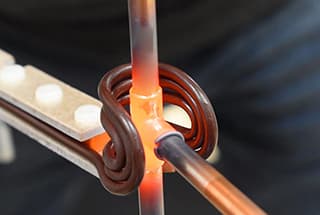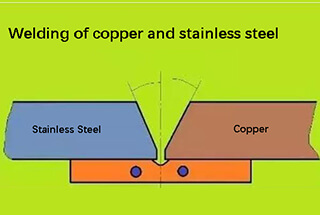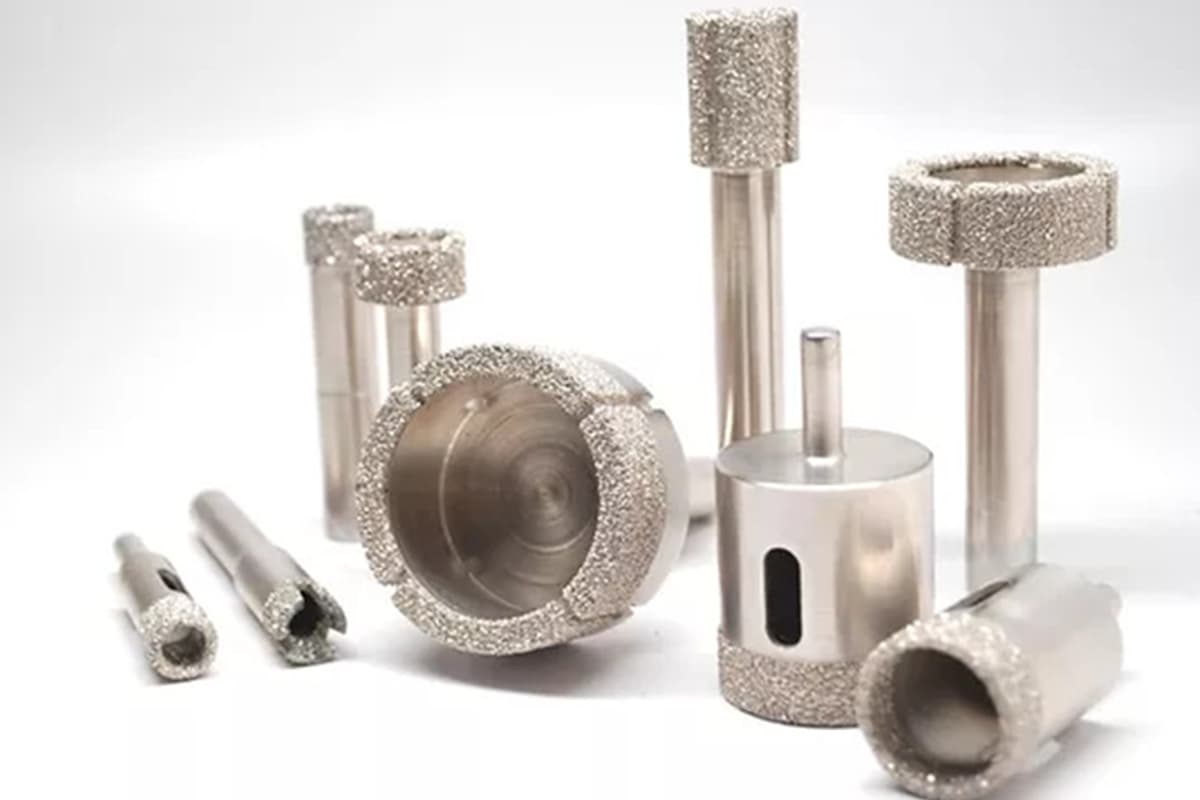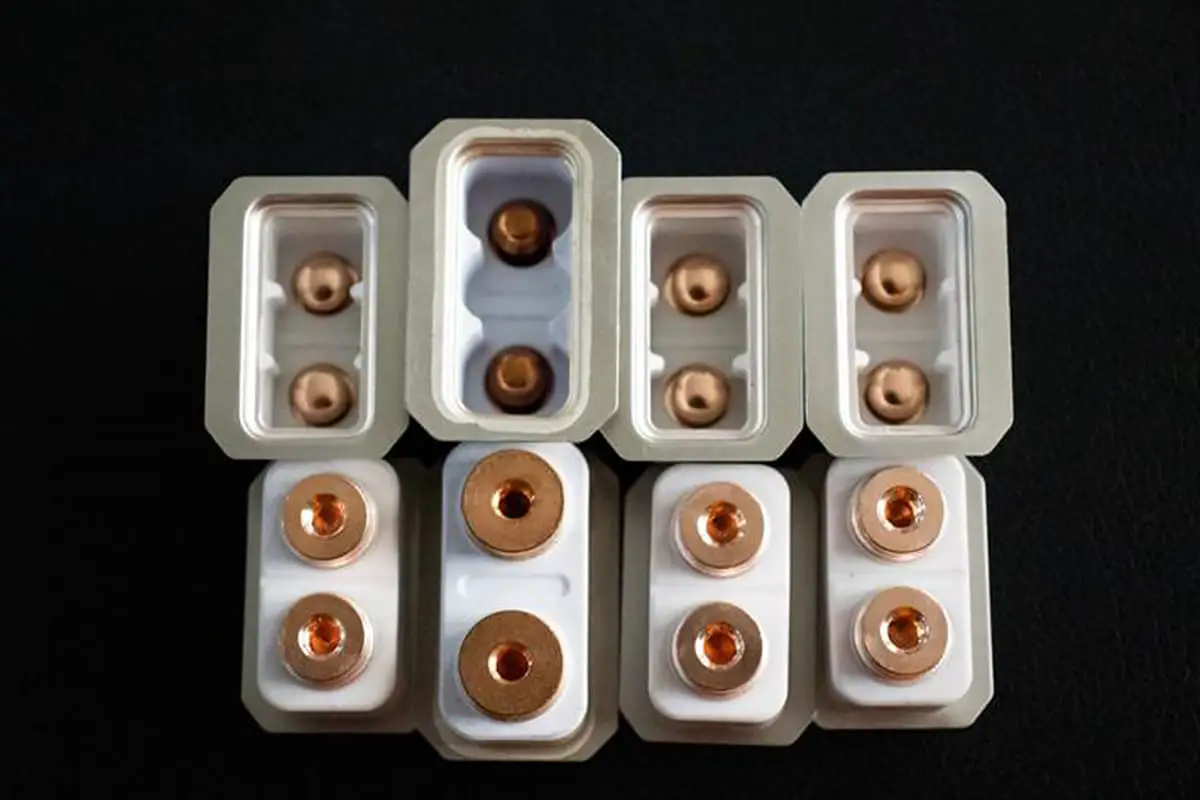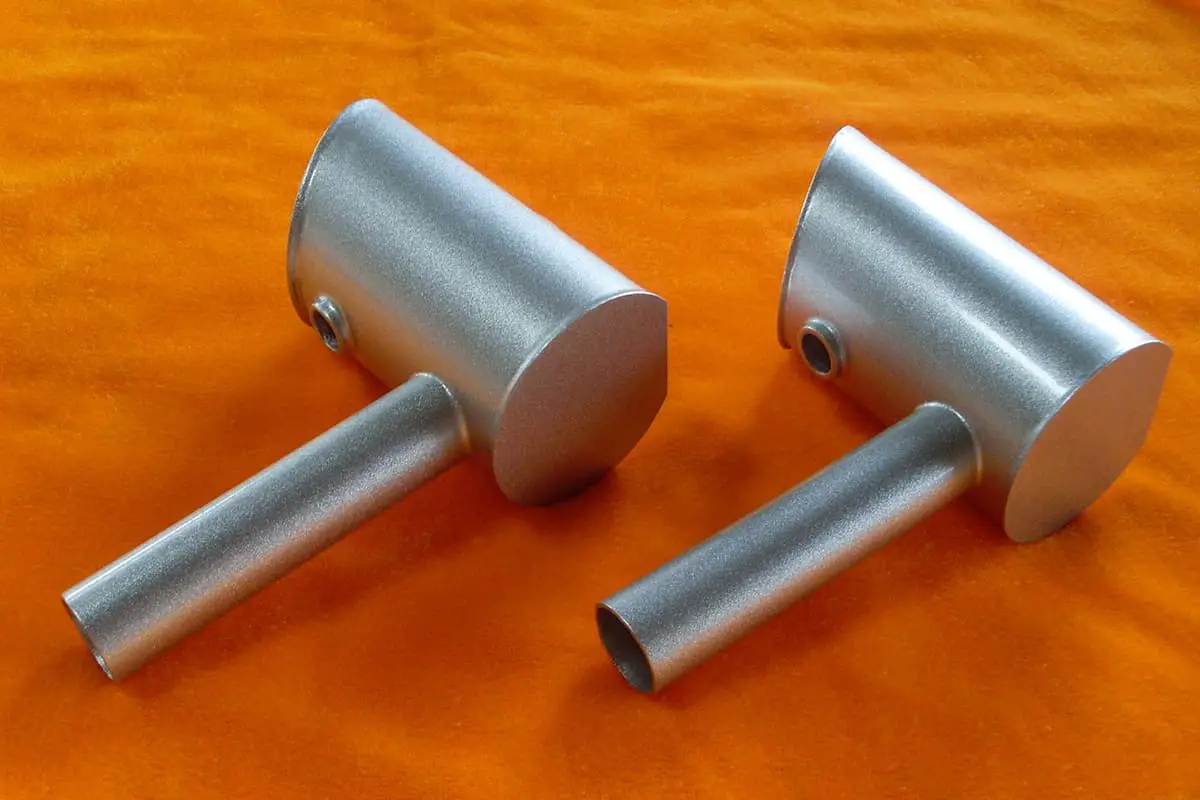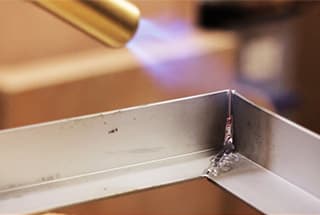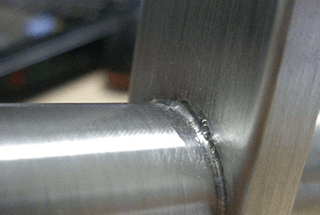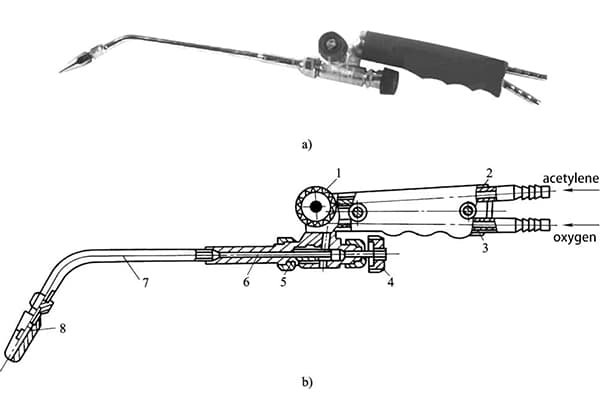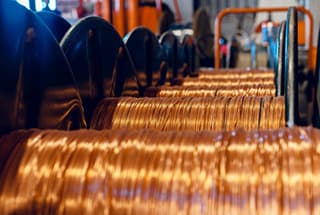
Why is brazing stainless steel so challenging yet crucial? This article explores the key issues, from oxide film removal to temperature control, impacting the quality and durability of brazed joints. It covers the materials and techniques necessary to achieve strong, corrosion-resistant connections. Readers will learn about the best practices for selecting filler metals and maintaining the integrity of stainless steel during brazing.
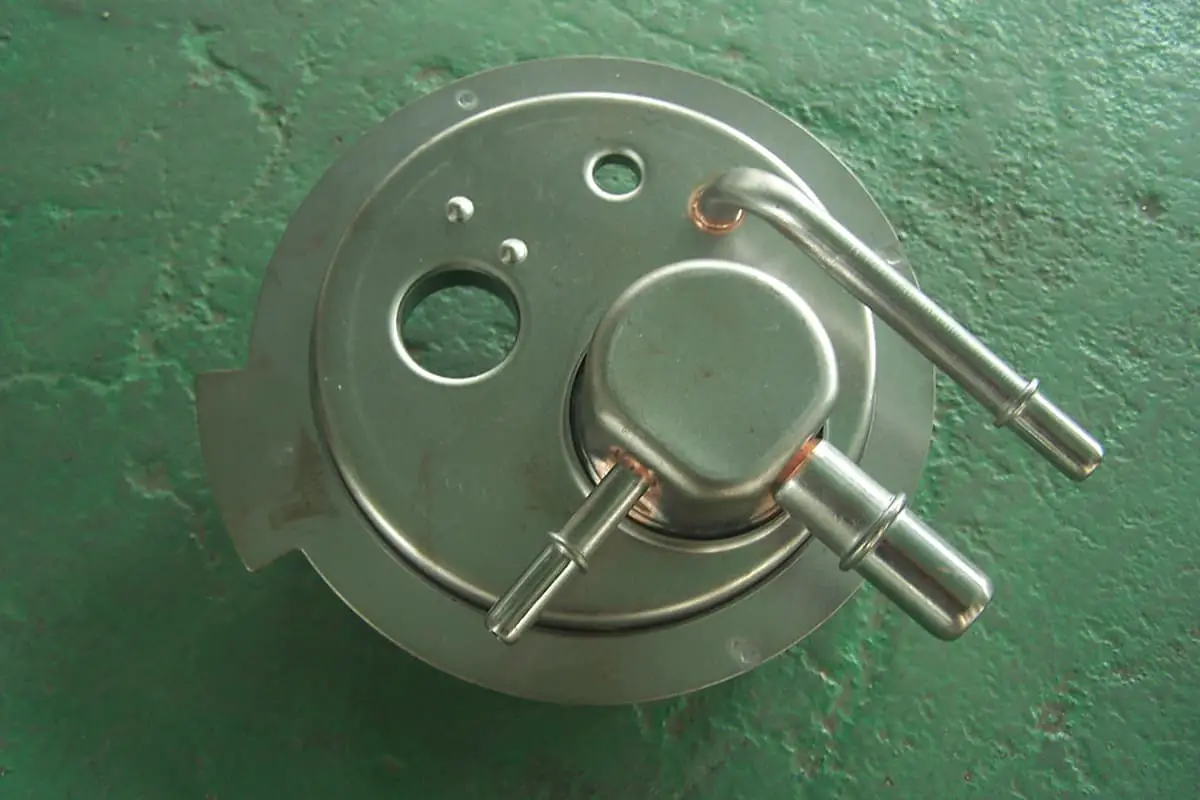
The primary issue in brazing stainless steel is the presence of oxide films on the surface, which significantly affects the wettability and spreading of the filler metal.
Various stainless steels contain a considerable amount of Cr, and some also contain elements such as Ni, Ti, Mn, Mo, Nb, etc., which can form various oxides and even complex oxides on the surface. Among them, the oxides of Cr and Ti, Cr2O3 and TiO2, are quite stable and difficult to remove.

When brazing in the air, active flux is required to remove them. When brazing in a protective atmosphere, the oxide film can only be reduced under low dew point, high-purity atmosphere, and sufficiently high temperature. In vacuum brazing, high vacuum and temperature are necessary to achieve good brazing effects.
Another issue in brazing stainless steel is that the heating temperature has a significant impact on the microstructure of the base material. The heating temperature for austenitic stainless steel brazing should not exceed 1150°C, as excessive grain growth may occur.
If the austenitic stainless steel does not contain stabilizing elements such as Ti or Nb and has a high carbon content, brazing within the sensitization temperature range (500-850°C) should be avoided to prevent the precipitation of chromium carbides and reduce corrosion resistance.
The temperature selection for martensitic stainless steel brazing is more stringent. It either requires the brazing temperature to match the quenching temperature, combining the brazing process with the heat treatment process, or the brazing temperature should be lower than the tempering temperature to prevent softening of the base material during brazing.
The temperature selection principle for precipitation hardening stainless steel brazing is the same as that for martensitic stainless steel, where the brazing temperature must match the heat treatment regime to obtain optimal mechanical properties.
In addition to the above two main issues, austenitic stainless steel is prone to stress cracking during brazing, especially when brazing with copper-zinc filler metals. To prevent stress cracking, the workpiece should undergo stress relief annealing before brazing, and the heating of the workpiece during brazing should be as uniform as possible.
(1) Filler Metals
According to the requirements of stainless steel weldments, commonly used filler metals for stainless steel brazing include tin-lead solder, silver-based filler metals, copper-based filler metals, manganese-based filler metals, nickel-based filler metals, and precious metal filler metals.
Tin-lead solder is mainly used for soft brazing of stainless steel, and a higher tin content is preferred. The higher the tin content in the filler metal, the better its wetting ability on stainless steel.
The shear strength of 1Cr18Ni9Ti stainless steel joints brazed with several commonly used tin-lead solders is listed in Table 3. Due to the low joint strength, it is only used for brazing parts with low load-bearing requirements.
Table 3 Shear Strength of 1Cr18Ni9Ti Stainless Steel Joints Brazed with Tin-Lead Solder
| Solder alloy grade | Sn | S-Sn90Pb | S-Pb58SnSb | S-Pb68SnSb | S-Pb80SnSb |
| Shear strength /MPa | 30.3 | 32.3 | 31.3 | 32.3 | 21.5 |
Silver-based filler metals are the most commonly used filler metals for brazing stainless steel, with silver-copper-zinc and silver-copper-zinc-cadmium filler metals being the most widely used due to their minimal impact on the base material’s properties at brazing temperatures.
The strength of 1Cr18Ni9Ti stainless steel joints brazed with several commonly used silver-based filler metals is listed in Table 4. Stainless steel joints brazed with silver-based filler metals are rarely used in highly corrosive environments, and the operating temperature of the joints generally does not exceed 300°C.
When brazing stainless steel without nickel, a filler metal with a higher nickel content, such as B-Ag50CuZnCdNi, should be used to prevent corrosion of the brazed joint in humid environments.
When brazing martensitic stainless steel, a filler metal with a brazing temperature not exceeding 650°C, such as B-Ag40CuZnCd, should be used to prevent softening of the base material.
When brazing stainless steel in a protective atmosphere, a self-fluxing filler metal containing lithium, such as B-Ag92CuLi and B-Ag72CuLi, can be used to remove the oxide film on the surface.
When brazing stainless steel in a vacuum, a silver filler metal containing elements such as Mn, Ni, and Rd can be selected to ensure good wetting properties of the filler metal even without easily evaporating elements such as Zn and Cd.
Table 4 Strength of 1Cr18Ni9Ti Stainless Steel Joints Brazed with Silver-Based Filler Metals
| Brazing material grade | B-Ag10CuZn | B-Ag25CuZn | B-Ag45CuZn | B-Ag50CuZn |
| Tensile strength /MPa | 386 | 343 | 395 | 375 |
| Shear strength /MPa | 198 | 190 | 198 | 201 |
| Brazing material grade | B-Ag70CuZn | B-Ag35CuZnCd | B-Ag40CuZnCd | B-Ag50CuZnCd |
| Tensile strength /MPa | 361 | 360 | 375 | 418 |
| Shear strength /MPa | 198 | 194 | 205 | 259 |
The main copper-based brazing materials used for brazing different steel joints are pure copper, copper-nickel, and copper-manganese-cobalt brazing materials. Pure copper brazing material is mainly used for brazing under gas protection or vacuum conditions.
It is suitable for stainless steel joints with a working temperature not exceeding 400℃, but its oxidation resistance is not good. Copper-nickel brazing material is mainly used for flame brazing and induction brazing.
The strength of the brazed joint of 1Cr18Ni9Ti stainless steel is shown in Table 5. It can be seen that the joint has the same strength as the base material and can work at higher temperatures.
Copper-manganese-cobalt brazing material is mainly used for brazing martensitic stainless steel in a protective atmosphere. The strength and working temperature of the joint can be comparable to those of the joint brazed with gold-based brazing material.
For example, the performance of the 1Cr13 stainless steel joint brazed with B-Cu58MnCo brazing material is equivalent to that of the same stainless steel joint brazed with B-Au82Ni brazing material (see Table 6), but the production cost is greatly reduced.
Table 5 Shear strength of 1Cr18Ni9Ti stainless steel joint brazed with high-temperature copper-based brazing material.
Table 5 Shear strength of 1Cr18Ni9Ti stainless steel joint brazed with high-temperature copper-based brazing material.
| Brazing material grade | Tensile strength /MPa | ||
| 20℃ | 400℃ | 500℃ | |
| B-Cu68NiSiB | 324~339 | 186~216 | – |
| B-Cu69NiMnCuSiB | 241~298 | – | 139~153 |
Table 6 Shear strength of 1Cr13 stainless steel brazed joints
| Brazing material grade | Tensile strength /MPa | |||
| Room temperature | 427℃ | 538℃ | 649℃ | |
| B-Cu58MnCo | 415 | 217 | 221 | 104 |
| B-Au82Ni | 441 | 276 | 217 | 149 |
| B-Ag54CuPd | 399 | 207 | 141 | 100 |
Manganese-based brazing materials are mainly used for gas shielded brazing, and high purity gas is required. To prevent grain growth in the base material, it is advisable to use brazing temperatures below 1150℃ with the corresponding brazing material.
Satisfactory brazing results can be achieved with stainless steel joints brazed using manganese-based brazing materials, as shown in Table 7. The joint can withstand working temperatures up to 600℃.
Table 7 Shear strength of 1Cr18Ni9Ti stainless steel joints brazed with manganese-based brazing material.
| Brazing material grade | Tensile strength /MPa | |||||
| 20℃ | 300℃ | 500℃ | 600℃ | 700℃ | 800℃ | |
| B-Mn70NiCr | 323 | 一 | 一 | 152 | – | 86 |
| B-Mn40NiCrFeCo | 284 | 255 | 216 | – | 157 | 108 |
| B-Mn50NiCo | 325 | 一 | 253 | 160 | – | 103 |
| B-Mn50NiCuCrCo | 353 | 294 | 225 | 137 | – | 69 |
| B-Mn52NiCuCr | 366 | 270 | 一 | 127 | – | 67 |
When nickel-based solder is used for brazing stainless steel, the joint has good high-temperature performance. This type of solder is generally used for gas shielded brazing or vacuum brazing.
In order to overcome the problem of excessive formation of brittle compounds in the brazed joint, which leads to a significant reduction in joint strength and plasticity, the joint clearance should be minimized as much as possible, and the elements that easily form brittle phases in the solder should be fully diffused into the base material.
In order to prevent the phenomenon of grain growth in the base material at brazing temperature due to excessive insulation time, short-term insulation and low-temperature (compared to brazing temperature) diffusion treatment can be adopted after brazing.
Precious metal solders used for brazing stainless steel mainly include gold-based solders and palladium-containing solders, among which the most typical ones are B-Au82Ni and B-Ag54CuPd. B-Au82Ni has good wettability.
The brazed stainless steel joint has high high-temperature strength and oxidation resistance, and the maximum working temperature can reach 800℃. B-Ag54CuPd has similar characteristics to B-Au82Ni and has a lower price, so there is a tendency to replace B-Au82Ni.
(2) Brazing flux and furnace atmosphere: The surface of stainless steel contains oxides such as Cr2O3 and TiO2, which must be removed using active flux. When brazing stainless steel with tin-lead solder, phosphoric acid solution or zinc oxide hydrochloric acid solution can be used as the flux.
The phosphoric acid solution has a short activation time and requires a rapid heating brazing method. When brazing stainless steel with silver-based solder, FB102, FB103, or FB104 flux can be used. When brazing stainless steel with copper-based solder, FB105 flux is used due to the higher brazing temperature.
When brazing stainless steel in a furnace, vacuum atmosphere or protective atmospheres such as hydrogen, argon, and decomposed ammonia are commonly used. In vacuum brazing, the vacuum pressure should be lower than 10-2Pa.
When brazing in a protective atmosphere, the dew point of the gas should not exceed -40℃. If the gas purity is not enough or the brazing temperature is not high, a small amount of gas flux such as boron trifluoride can be added to the atmosphere.
Before brazing stainless steel, stricter cleaning must be carried out to remove any grease and oil film, and brazing should be carried out immediately after cleaning.
Brazing stainless steel can be done using flame, induction, or furnace heating methods. The furnace used for furnace brazing must have a good temperature control system (the deviation of brazing temperature should be within ±6℃) and be able to cool rapidly.
When using hydrogen as the protective gas for brazing, the requirements for hydrogen depend on the brazing temperature and the composition of the base material.
That is, the lower the brazing temperature and the higher the stabilizer content in the base material, the lower the dew point of hydrogen gas is required.
For example, for martensitic stainless steels such as 1Cr13 and Cr17Ni2t, the dew point of hydrogen gas should be below -40℃ at 1000℃ brazing temperature; for unstabilized 18-8 chromium-nickel stainless steels, the dew point of hydrogen gas should be below 25℃ at 1150℃ brazing temperature; but for 1Cr18Ni9Ti stainless steel with titanium stabilizer, the dew point of hydrogen gas at 1150℃ brazing temperature must be below -40℃.
When using argon as the protective gas for brazing, higher purity of argon gas is required.
If copper or nickel plating is applied on the surface of stainless steel, the requirement for the purity of the protective gas can be reduced.
To ensure the removal of the oxide film on the surface of stainless steel, BF3 gas flux can be added, or self-fluxing solders containing lithium or boron can be used. The vacuum required for vacuum brazing stainless steel depends on the brazing temperature. With the increase of brazing temperature, the required vacuum degree can be reduced.
The main process after brazing stainless steel is to clean the residual flux and residual flux inhibitor, and if necessary, perform post-brazing heat treatment. Depending on the flux and brazing method used, residual flux can be removed by water flushing, mechanical cleaning, or chemical cleaning.
If abrasive is used to clean residual flux or oxide film in the vicinity of the joint, sand or other non-metallic fine particles should be used.
For martensitic stainless steel and precipitation-hardened stainless steel parts, post-brazing heat treatment is required according to the special requirements of the material.
Stainless steel joints brazed with nickel-chromium-boron and nickel-chromium-silicon solders are often subjected to diffusion heat treatment after brazing to reduce the requirements for joint gaps and improve the structure and properties of the joint.

